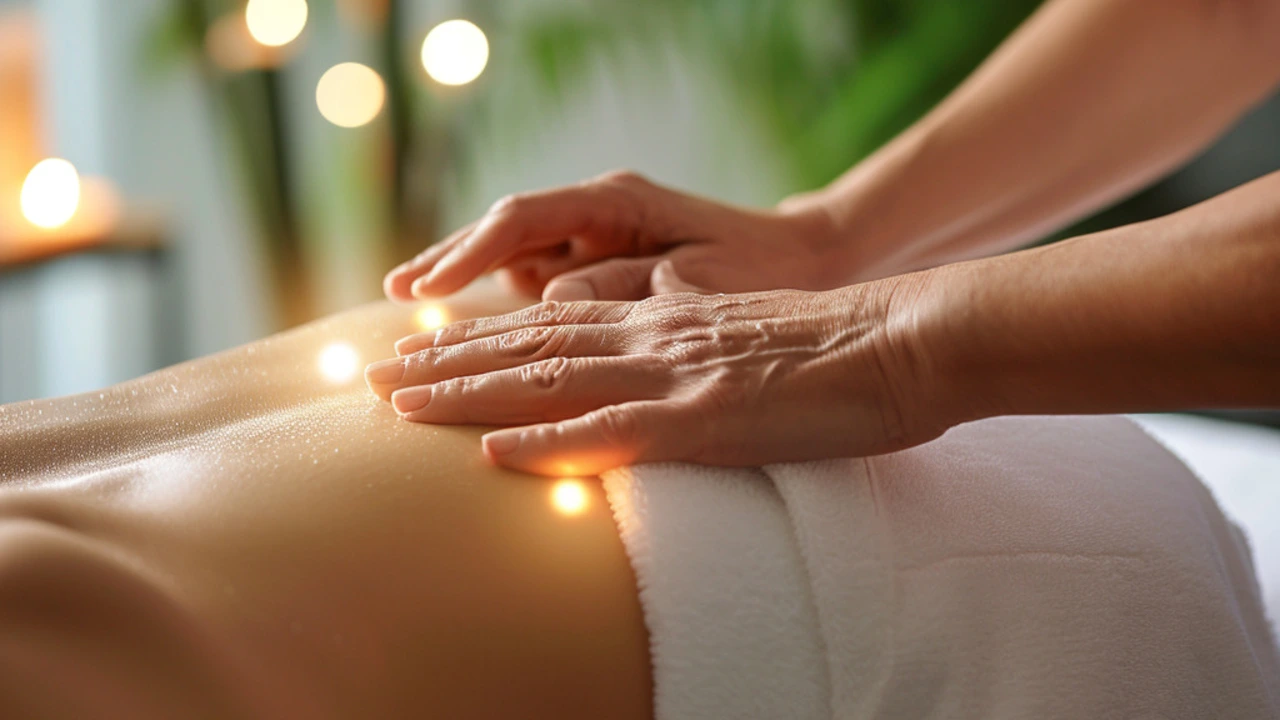Unlock Wellness with Trigger Point Therapy: Your Guide to Muscle Pain Relief

Understanding Trigger Points and Their Impact on the Body
Imagine carrying a small pebble in your shoe all day. Uncomfortable, right? Now, picture that sort of persistent irritation deep within your muscles, a source of relentless aches that you can't seem to shake off. These are what we often refer to as trigger points, tiny knots that form when muscles fail to relax. Often, they are the culprits behind the feeling of a 'charley horse' or a stubborn crick in the neck. But it isn't just the localized soreness that's bothersome. Trigger points can also cause referred pain—a discomfort felt in seemingly unrelated parts of the body. The impact on everyday life isn't trivial; it can range from mildly inconvenient to outright debilitating.
Historically, medical practitioners like Dr. Janet Travell and Dr. David Simons have shed light on the significance of these knots. Their pioneering work has provided valuable insights into how these little bundles of muscle fibers can influence our overall health. Tackling trigger points isn't just about addressing temporary discomfort; it's about restoring the body's balance and natural movement patterns.
How Trigger Point Massage Unlocks Muscle Relief
Trigger point massage applies focused pressure to these pesky knots, coaxing the tightly wound muscle fibers to relax. By applying sustained pressure and using specific massage techniques, the therapy eases the contraction of muscle fibers. The relief isn't only momentary; it's about hitting the reset button on a cycle of pain and tension. What sets trigger point therapy apart from a general massage is its precision. Practitioners of this massage type are like detectives, tracing the map of discomfort to its origins, delivering targeted relief where it's needed most.
The great news is, it's not an elusive technique reserved for a handful of massage therapists. With the right guidance and know-how, even regular folks can learn to employ basic trigger point massage tactics to manage pain. Think of it as equipping yourself with an internal toolset that you can deploy at the first sign of muscle discomfort.
Decoding the Benefits: Beyond Just Pain Relief
The benefits of trigger point massage go beyond the obvious result of pain alleviation. Sure, getting rid of pain is a big win, but there's more. For starters, regular trigger point therapy can enhance flexibility and range of motion. Muscles bound by knots tend to restrict movement. When those restrictive barriers are broken down, your body enjoys a renaissance of movement. Secondly, this type of massage promotes better blood and lymphatic circulation, which can reduce swelling and speed up healing from injuries.
And let's talk stress relief. While it's a physical therapy, the effects are holistic. Reduced muscle tension can often correlate to lowered stress and anxiety levels. When your body isn't constantly combatting discomfort, your mind has more bandwidth to rest and rejuvenate. Plus, improved sleep—a benefit often reported by devotees of trigger point therapy—is nothing to scoff at.
Self-Massage Techniques: A DIY Approach to Pain Management
Visit a therapist, or tackle it on your own—both approaches are valid. Self-massage for trigger points is surprisingly attainable. With tools like foam rollers, massage balls, and even simple items like tennis balls, you can partake in this therapeutic practice from the comfort of home. It's a matter of identifying the trigger points (the spots that feel like tender nodules under the skin) and applying firm, steady pressure.
However, it's essential to approach self-massage with caution. There's a thin line between therapeutic pressure and potential injury. A bit of discomfort is expected, but if you're gritting your teeth and bracing for impact, you've likely gone too far. The key is to press just enough to see results without causing harm.
Expert Intervention: When to See a Professional
Self-help is commendable, but there are times when a professional's touch can make all the difference. Cases involving persistent, debilitating pain, or complexities like overlapping referral pain patterns, call for an expert's intervention. Licensed therapists not only bring years of experience to the table but are adept at navigating the intricate landscape of trigger points. They can tailor a therapy session to your body's unique needs, employing techniques that may be beyond the reach of layperson-equipped home remedies.
Moreover, receiving massage therapy from a professional can be a deeply educational experience. It's an opportunity to better understand your body, learn self-care strategies, and potentially pick up pointers on how to perform self-massage more effectively. Support from a professional doesn't mean you're dependent; rather, it's about enhancing your self-care arsenal.
Integrating Trigger Point Massage into Your Wellness Routine
Incorporating trigger point massage into your wellness routine can be quite straightforward. It doesn't have to involve dramatic shifts in your day-to-day. Sometimes, it's as simple as taking a short break during work to roll out a tense shoulder or scheduling regular sessions with a therapist. The beauty of this therapy is its scalability and adaptability to your lifestyle.
Whether it's a five-minute daily routine or a bi-weekly deep-tissue session, the versatility of trigger point massage makes it an accommodating ally in your health regimen. The key is consistency. Like any form of therapy, the benefits compound over time, so regular practice is crucial for long-term relief.
Precautions and Safety Tips for Effective Treatment
While trigger point massage is generally safe, it's important to navigate it with wisdom. Recognize the difference between therapeutic discomfort and pain signaling harm. Being tuned in to your body's responses during self-massage can guide you in applying the right amount of pressure. And of course, consult a healthcare professional before starting any new treatment, especially if you have underlying health conditions.
Remember, each body is unique, and sensitivity varies from person to person. Paying attention to reactions and adjusting techniques accordingly is the cornerstone of a safe and effective trigger point therapy journey. By doing so, you'll not only relieve pain but also build a deeper connection with your body's signals and needs.
